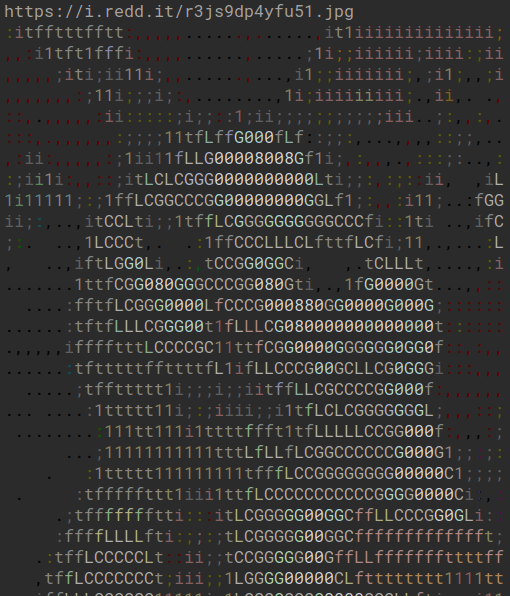The unix pipe operator is magical.
As long as you write your application to read input from standard-in and write output to standard-out you can compose your cli tool with thousands of other tools.
Scanners
To read one line at a time I like to use bufio.NewScanner. This uses bufio.ScanLines to split the reader by new lines.
in := bufio.NewScanner(os.Stdin)
// Scan returns false when its out of lines
for in.Scan() {
// line is a string
line := in.Text()
// if you want bytes in.Bytes() exists too
}
Lets build a tool
As an example here is a tiny command line tool I wrote to read urls for images and display them as ascii art images on the terminal.
Full source https://gist.github.com/trashhalo/6154a690bd2612ae33c8252d8051eb9f
func main() {
in := bufio.NewScanner(os.Stdin)
for in.Scan() {
line := in.Text()
err := convertLineToArt(line)
if err != nil
}
}
func convertLineToArt(line string) error {
fmt.Println(line)
resp, err := http.Get(line)
if err != nil {
defer resp.Body.Close()
img, _, err := image.Decode(resp.Body)
convertOptions := convert.DefaultOptions
convertOptions.FixedWidth = 50
convertOptions.FixedHeight = 50
converter := convert.NewImageConverter()
for _, row := range converter.Image2ASCIIMatrix(img, &convertOptions) {
fmt.Print(row)
}
return nil
}
Use Pipe
Now lets combine together a few tools.
curl -A "test" https://www.reddit.com/r/cats.json | jq -r '.data.children[] | .data.url'|go run .|less
This is saying:








Top comments (0)